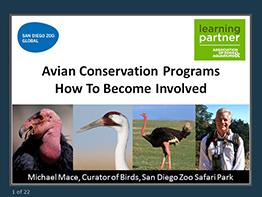 |
Avian Conservation Programs How To Become Involved |
1.00 |
The field conservation and the zoo communities are partnering at an increasing rate to conserve birds in the wild and in zoos. Avian management techniques that were developed in zoos are being utilized to benefit wild populations. Developing your skills and experiences has a direct impact on species in the wild while also creating career development opportunities. Learn how to become more involved in local and international avian conservation. |
 |
Framing: Toxic Inhalations at Structure Fires |
1.00 |
In this brief overview, we discuss the topic of smoke inhalation as it relates to what may occur during a typical structure fire. The emphasis of this lesson will be CO and Cyanide. These are two of the most common toxic inhalation hazards that EMS providers will encounter when treating those that are exposed. Final Exam: This multiple-choice exam is designed to test your knowledge of the material you just reviewed. You have two attempts to gain an 70% or higher on this exam. Please take your time and answer each question carefully. |
 |
Growth Mindset in the Classroom |
1.25 |
This course covers how to incorporate a growth mindset in the classroom. It includes a comparison between growth and fixed mindset, as well as ways to help students have a "can do" attitude in school. It will help you develop new knowledge about this concept and how you can support a growth mindset in the classroom. This is just one of the many K-12 education courses we offer. |
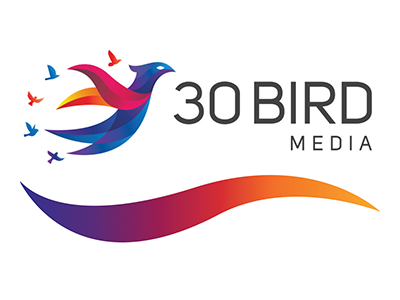 |
Microsoft Excel 2019 Complete |
24.00 |
Excel 2019 Complete provides the concepts and skills to be productive with Microsoft Excel 2019, starting with fundamentals and working up to advanced tools and techniques. This course maps to the objectives of the Microsoft Office Specialist and Expert exams for Excel 2019. Objective coverage is marked throughout the course, and you can download an objective map from 30bird.com.
Students will benefit most from this course if they want to use Excel 2019 to perform real-world tasks, from common workplace tasks to complex operations with large amounts of data. If students intend to take a Microsoft Office Specialist or Expert exam for Excel, this course offers complete coverage of all the objectives for both exams.
The course assumes students know how to use a computer, and that they're familiar with Microsoft Windows. It does not assume that they've used a different version of Excel or another spreadsheet program before. |
 |
Searching Online |
0.75 |
This course covers the fundamentals of searching online. From using basic features, such as the homepage and address bar, to using "advanced search" to find very specific information, this course will cover it all. |
 |
Creativity and Innovation: Promoting Team Creativity (Instructor Guide) |
1.34 |
The purpose of a team is to bring together people with diverse personalities, knowledge, education, and experience. This combined diversity encourages creativity and productivity to accomplish a common goal. Teams might consist of people from a single department or several departments.
Teams can generate new ideas, expand on or improve current ideas, make decisions, and solve problems. Teams can also be assigned to a specific task or be made responsible for a broader area, such as responding to changing customer expectations. When team members recognize their roles in a team, and the manager performs his responsibilities, creativity has a better chance of flourishing.
In this course you will learn to: identify characteristics of creative teams, and manage these teams effectively, conduct creative team sessions, and conduct brainstorming sessions, and use creativity to solve problems.
This Instructor's Edition of this course includes notes and suggestions to assist you in presenting the material, whether in an in-person classroom setting, or as an instructor-led online or distance-learning course. It also provides you with the answers to questions found in mid-lesson activities, as well as in the quiz that concludes the course. |
 |
Remote Learning in a Tiered Behavior Framework |
1.00 |
This course covers implementing strategies for remote learning in a tiered behavior framework. A different setting for learning requires adaptations to instruction, engagement, and response to students. School and family partnerships lay the foundation for supporting students in a Multi-Tiered System of Support (MTSS). |
 |
Chest Pain - Beyond MONA |
1.00 |
A review of atypical etiologies for chest pain, provided for an intended audience of prehospital care providers. This course refreshes physiology and pathophysiology for various cardiac and non-cardiac causes of chest pain, including definitions, disease morbidity and mortality, and prehospital treatments.
This training is primarily designed to assist paramedic providers as they care for patients in the prehospital environment |
 |
ROAR: How to Build a Resilient Organization the World-Famous San Diego Zoo Way |
0.75 |
Roar: How to Build a Resilient Organization the World-Famous San Diego Zoo Way shows leaders at any level how to unleash the full potential of their teams to create lasting organizational resiliency rivaling that of the world-famous San Diego Zoo. It will show how the Zoo’s operating organization, San Diego Zoo Global, has utilized a set of innovative programs to create its team of exceptional leaders and engaged employees who have engendered its amazing accomplishments.
Featuring real-world stories, best practices, and specific strategies based on 100 years of exceptional leadership, this unique and valuable resource will help organizations of any size and focus to master winds of change, overcome stress and adversity, thrive in times of chaos, and constant in pursuit of their vision, and accomplish extraordinary things. |
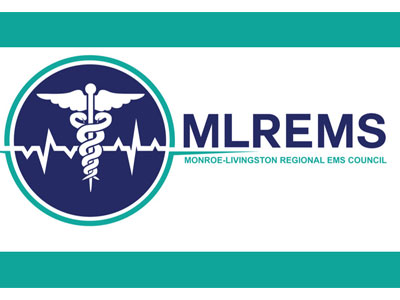 |
Constructing: FAST-ED Overview |
1.00 |
Professor of Emergency Medicine and Chief of the Division of Prehospital Medicine at the University of Rochester, Jeremy Cushman, brings his experienced team of prehospital providers together to discuss the benefits of Field Assessment Stroke Triage for Emergency Destination (FAST-ED). You will want to take notes and download your favorite smartphone app. This lesson is sure to spark an excellent discussion with your training officers and/or medical director(s).
Final Exam: This multiple choice exam is designed to test your knowledge of the material you just reviewed. You have two attempts to gain an 80% or higher on this exam. Please utilize the smartphone app of your choosing and take your time and answer each question carefully. |
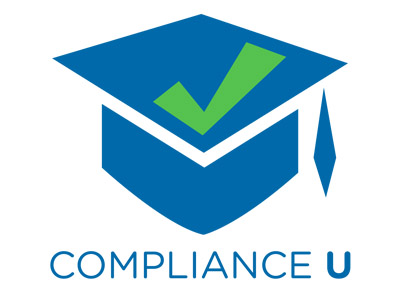 |
The NoFEAR Act (Corrections) |
0.25 |
This course will inform participants of the Notification and Federal Employee Antidiscrimination and Retaliation Act, also known as the NoFEAR Act. At the conclusion of this course, participants should understand the basic provisions of the NoFEAR Act, know what Antidiscrimination and Whistleblower Protection Laws protect them, and understand how to file a complaint alleging discrimination, retaliation, or a violation of the Whistleblower Protection Laws. |
 |
Building Upward—Primary Assessment |
1.00 |
Course Description: It is often said that experience is the best teacher. Dr. Jack Davidoff is an experienced EMS Medical Director. Paramedic Jason Haag is an experienced fire and EMS provider. The two of them share a few thoughts that prove to be an excellent review of what should and could be done during a standard primary assessment and more. Final Exam: A score of 80% or higher is required to obtain your certificate. You have two attempts to pass this multiple-choice exam. Please take your time to carefully answer each question. |
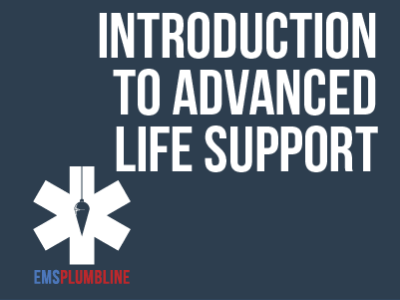 |
Constructing: Airway Essentials—Part 2 |
0.50 |
Most paramedics will remember walking around town during their original paramedic school and deciding which patients would be a "tough tube." If that describes you when you first started, you will appreciate this brief review. Dr. Christopher Galton takes the time to takes the time to give a memorable examples of the mnemonics LEMON and BONES, which prove to be a fantastic teaching tools. We think you will enjoy the illustrations that allow you to remember these important evaluations. Final Exam: This multiple choice exam is designed to test your knowledge of the material you just reviewed. You have two attempts to gain an 80% or higher on this exam. Please take your time and answer each question carefully.
|
 |
Effective Presentations: Audience Analysis and Supporting Material (Instructor Guide) |
0.84 |
Audience analysis is the process of determining the audience’s needs, so you can give an appropriate presentation. You should determine the reason people will attend your presentation; it might be a requirement, or they might be interested in the topic. It is also helpful to determine your audience's attitudes, interests, and level of knowledge.
This Instructor's Edition of this course includes notes and suggestions to assist you in presenting the material, whether in an in-person classroom setting, or as an instructor-led online or distance-learning course. It also provides you with the answers to questions found in mid-lesson activities, as well as in the quiz that concludes the course. |
 |
CWNP Certified Wireless Specialist CWS-101 Exam Prep |
1.00 |
Exam Prep to accompany 30 Bird's CWNP Certified Wireless Specialist - Exam CWS-101 course. |
 |
Egress, Fire Prevention, & Fire Protection |
0.65 |
In this course, participants will learn about escape routes and exits, emergency action plans, fire prevention plans, fires, fire extinguishers, and workplace fire prevention tips. |
 |
Safety and Survival in an Active Shooter Event in School Settings |
0.75 |
Welcome to Safety and Survival in an Active Shooter Event in School Settings. Recent national tragedies in schools remind us that the risk is real: an active shooter incident can happen in any place at any time in any school district. The best way to make sure you are safe is to prepare ahead of time and be ready.
Warning: Some of this content may be disturbing, if you need to take a break, please do so. If you exit and then come back into the course later, it will resume where you left off. |
 |
Building Upward: Resuscitation of Anaphylactic Shock Part 3—Scenario 2 |
1.00 |
In this second of three scenarios, we discuss the transport decisions that should be considered when dealing with the potential of a medical illness and a traumatic injury. Vanessa and Medical Director Dr. Jeremy Cushman discuss a patient who has a motorcycle accident that was caused by a beesting. This exciting discussion will effectuate a review of the minimum competencies of medical and trauma care at the EMT level. Final Exam: Please read each question carefully. You will have two attempts to gain a 70% or higher on this exam. If you are not successful in two attempts, you are welcome to take the course again to gain the certification. |
 |
Introduction to Fireground Communications |
0.50 |
This course defines communication and identifies five components of a fireground communication model. Each component is described in detail and a procedure for implementing the components is reviewed. The different types of common fireground communications are described and examples of each are given. |
 |
Environmental Systems |
2.00 |
Many of the animals exhibited in zoos and aquariums have very specific environmental requirements that must be met in order to support the life form and better ensure its welfare. This course will explore the unique biological, physiological, and welfare requirements of several varied types of animals; their unique requirements; and the implications for the provision of these requirements. |
 |
Combating Sexual Harassment in the Workplace (Spanish) (Corrections) |
0.75 |
En los últimos años, el tema del acoso sexual en el lugar de trabajo se ha convertido en el centro de atención nacional, trayendo consigo una renovada conciencia sobre la naturaleza grave e inaceptable de estas acciones y las graves consecuencias que conllevan.
Según la Ley del Estado de Nueva York (vigente en octubre de 2018), todos los empleadores del estado deben establecer una política de prevención del acoso sexual que incluya capacitación anual de conformidad con la Sección 201-G de la Ley Laboral.
Este curso fue desarrollado por CypherWorx, Inc. en alineación con los materiales de capacitación desarrollados por el Departamento de Trabajo y la División de Derechos Humanos para superar los estándares requeridos por el estado de Nueva York.
A través de este curso, los alumnos: Obtendrán una mejor comprensión de lo que se considera acoso sexual; Aprenda cómo denunciar el acoso sexual; y Obtenga información sobre las opciones de informes externos.
Al completar este curso: Comprenderá mejor lo que se considera acoso sexual; Aprenderá cómo reportar el acoso sexual; Aprenderá sobre las opciones de informes externos. |
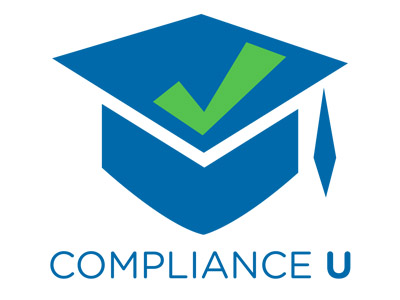 |
Preventing Sexual Harassment and Understanding California Law |
0.50 |
This course will teach California employees how to recognize sexual harassment, defines the rights and responsibilities of employers and employees, and provides an overview of the legal remedies available in sexual harassment lawsuits. |
 |
Whole Child Approach |
1.25 |
This course covers the Whole Child Approach. It is just one out of many education courses we offer. This course will help you develop new knowledge about the Whole Child Approach and why it is significant in education. It will teach the importance of character development, social and emotional learning (SEL), personalized learning approaches, interventions, and assessments. This course will also explain culturally responsive teaching and how parent and community engagement is crucial to students' success. |
 |
Anger Management |
1.00 |
Anger is a set of physical responses, emotions, and behaviors triggered by a perceived threat or frustration. Anger can be harmful or helpful, depending on how you cope with your anger and the anger of others. This course will explore how to understand your anger better and manage your anger responses. You'll also examine the causes of anger and ways to use it constructively. |
 |
Business Ethics: Ethical Decisions (Instructor Guide) |
1.67 |
In this course you will learn to: define business ethics, describe how to balance personal values and organizational ethics, and identify common ethical dilemmas and their causes, and describe the DECISIONS method of making ethical decisions and identify the barriers to making such decisions. |


























